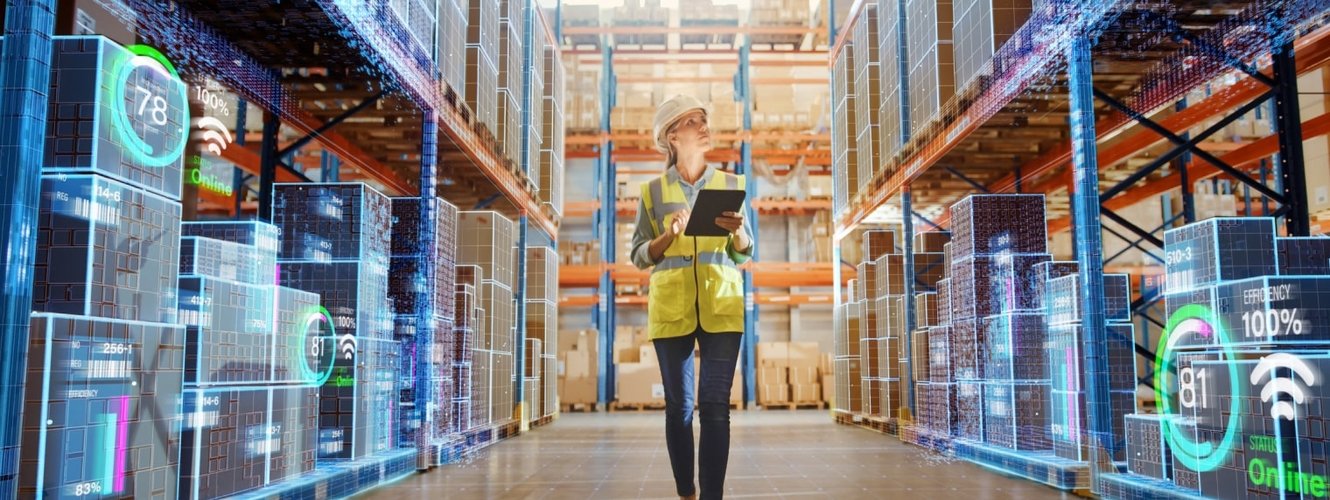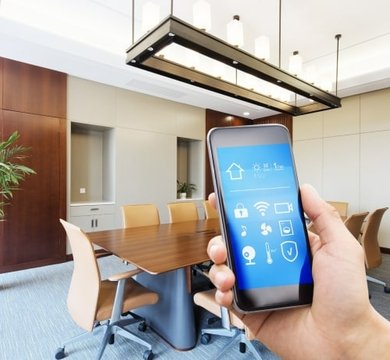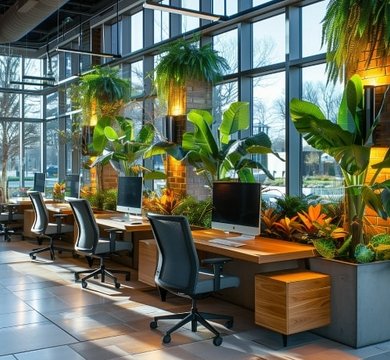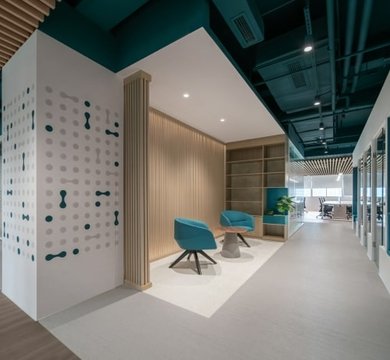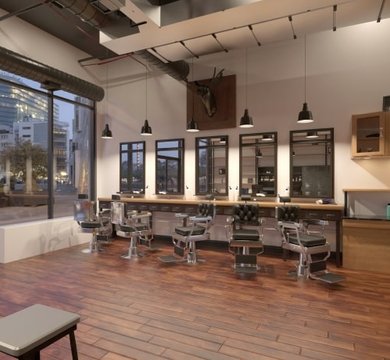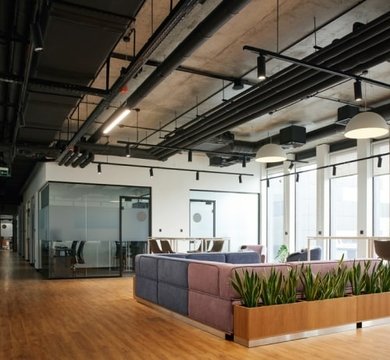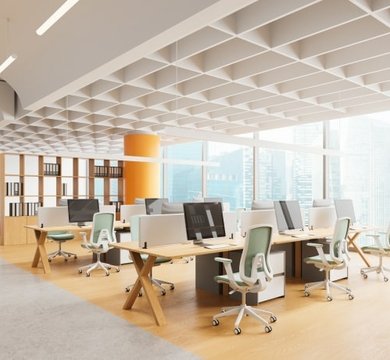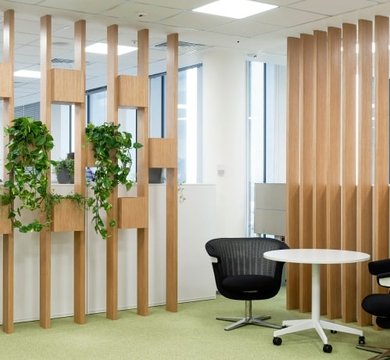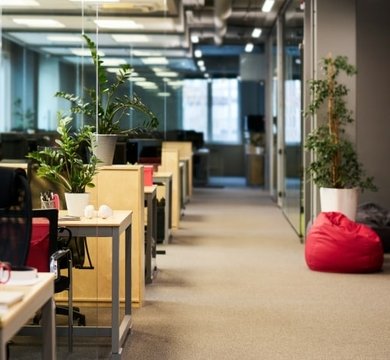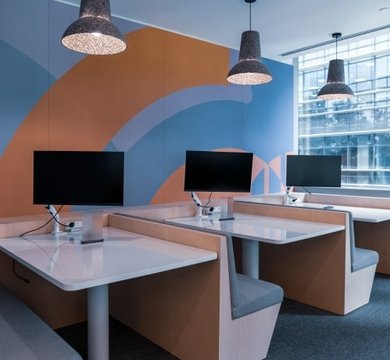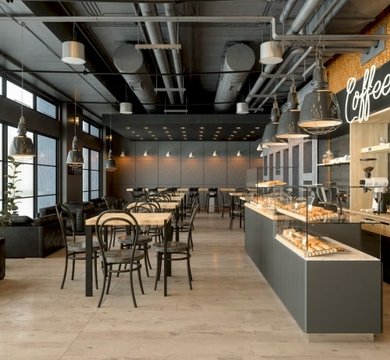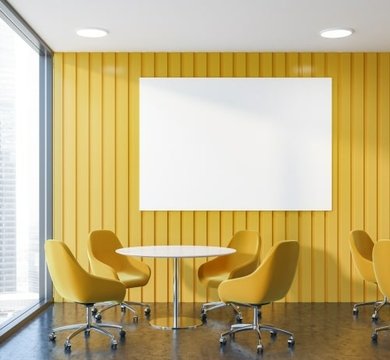Introduction
The advent of the internet has changed the way we shop forever. From app-based stores and Amazon to online banking and ‘click and collect’, the customer experience has altered dramatically when compared to 20 – even 10 – years ago.
As a result, the High Street has rapidly evolved to keep pace and in a case of ‘if you can’t beat them, join them’, retail design technology has been incorporated alongside more traditional retail fit out elements, such as display units and window displays.
In this article, we will explore the role of technology in modern retail design and provide practical ideas for integrating technology into your retail space.
The Evolution of Retail Design Technology
If you were born in a year that started with 19, you will probably be old enough to remember when shop keepers used a pricing gun to individually label goods, before manually inputting the price into a till. If you’re into history, you may even know the cash register was invented in 1883 by James Ritty.
The 20th century saw shops and department stores having to incorporate retail design technology into their refits, with the introduction of the first credit card in the 1940s and the barcode debuting in 1974.
The latter, along with stock keeping units (SKUs) still shape how we shop today, with either a cashier or the shopper themselves scanning a barcode, which automatically registers what they have bought, how much each item costs and the total amount due.
Twentieth century technology called for a radical new approach to retail design. Points of sale needed to incorporate the newly invented conveyor belt and tills become more sophisticated to handle cheques and card payments, as well as cash.
Fast forward to the 21st century and the instant-gratification mode of online shopping has forced retail to develop a hybrid experience that is constantly reshaping how stores look and are laid out.
Benefits of Retail Design Technology
While the aforementioned online shopping experience is quick and available 24/7, there is still value in the in-store customer experience. Today’s shoppers, however, want to combine traditional ways with technology.
For instance, if they see a coat they like on the shop floor but it’s not in their size, they want an assistant to use a hand-held device to instantly perform a stock check, not wait while someone rummages in the stockroom. Shoppers also want to grab a self-scanning handset from a central rack, zip around the store, dock at a till and self check-out.
Much of today’s slick efficiency is down to Electronic Point of Sale (EPOS) systems – a sophisticated piece of technology that is far more than a cash register. As well as processing payments, this element of retail design technology combines software and hardware to steer the entire retail ship, from processing returns and emailing receipts to customers for a paperless purchase, to managing employee rotas and stock control.
An EPOS also plays a crucial role in omnichannel shopping, where a customer orders online and opts to collect in store, and it’s a crucial data point. The digital snapshots provided show what stock is selling well and what might need a boost – the latter of which can be addressed in real time with repositioned displays, new signage and discounts.
Technology Ideas for Modern Retail Spaces
The future is already here! The latest retail design technology is being rolled out in a High Street near you. Advancements already include:
Cashierless shopping
While a divisive idea, it’s already being adopted by some retailers. Labelled a ‘just walk out’ experience, shoppers ensure they have the associated app on their phones before entering the store. Cameras monitor shoppers and sensors register what they remove from shelves and put into their shopping basket. When they leave, a virtual cart checks out and the shopper is automatically billed and sent an e-receipt.
Augmented reality & virtual reality experiences
High Street shopping experiences are becoming more engaging and immersive, thanks to augmented reality (AR) and virtual reality (VR). North Face is one brand embracing the alternative. In some stores, it has cleared an area of floorspace for customers to don VR goggles. Once in an alternative universe, they can hike, climb or even base jump – all activities that reflect the brand’s core values.
VR crosses over particularly well to interior design and decorating, with designs that customers have built on iPads being brought immersively to life in store. Alternatively, they can use AR to project how certain items of furniture will actually look in their own home.
Smart mirrors & interactive fitting rooms
Not everyone wants the hassle of trying on the same item in multiple colours, therefore the smart mirror was developed. Appearing in changing rooms across the globe, smart mirrors allow the shopper to change the colour of the garment by simply using hand gestures. They can even see how two outfits look side-by-side, for those ‘I just can’t decide’ moments. AR also moves into the fitting room, allowing customers to be virtually dressed in a number of different outfits without having to take a single garment off a hanger.
The powershelf
This idea is stunningly simple and easy to implement. Weight-sensitive mats are placed on shelves and when a critical number of products are removed from the location, store employees automatically receive a message that indicates stock levels are running low. Powershelves can also feature digital price tags, allowing the retailer to easily change the price or discount items.
Beacons and RFID tags
Retailers know in-store shoppers are ultra-valuable, so mining them for habit and preference information, as well as encouraging them to spend while in store, is critical. Beacons that emit low-energy radio waves - known as Bluetooth Low Energy (BLE) signals - recognise when mobile devices are in close proximity. When triggered, retailers can direct shoppers to a specific department, or text them a coupon for a product when they pass it to increase sales. Radio frequency identification tags (RFIDs) are useful for omnichannel purchasing, allowing shoppers to order online, pick-up in store and leave insights into their consumer habits.
Designing a Technology-Enhanced Retail Space
Working with a professional retail refurbishment and fit-out company is essential for brands venturing further into technology. Much of the success lies in the technical drawings and first fix, during which the MPL Interiors team will consider:-
- Internet connection: many EPOS systems are connected to the internet, so a reliable service is essential in modern retail, especially if hand-held devices are connected to a master server.
- Wi-Fi: shopping and social media have evolved to go hand-in-hand. Customers will expect quick and free access to a store’s Wi-Fi, which will encourage them to share selfies and engage in omnichannel shopping.
- Security: a base level of security is essential but brands who follow a cashierless path will need increased protection. We can rewire an entire premise to facilitate cameras and sensors, as we did for jeweller Steven Stone in Marylebone.
- Power supply: with a heavy reliance on digital devices and screens, many stores need a complete reconfiguration when it comes to power points and data supply. This is an aspect we fully managed when refitting Windsor’s branch of Bang & Olufsen.
- Display & demo units: one of the key advantages of in-store selling is being able to try out goods – especially when it comes to tech. MPL is a specialist in specifying power and data supplies for products, as we did for Nuconnect at Harrods.
Our retail design technology skill set was refined when MPL was asked to create a mock retail store as a testbed for new technology and staff training purposes for SML – a pioneer of innovative item-level RFID and brand identification solutions for the global retail sector. Our technical drawings allowed us to factor in enough power and data supplies for a very tech-heavy fit-out, which included multiple wall screens, a state-of-the-art till, a smart mirror, a robot (which needed its own charging station) and feature lighting.
MPL also enjoys syncing retail design technology with other design trends. We are particularly interested in how technology sits with a sustainable vision for shopping. Our solutions can help expedite a paperless operation and can help reduce food waste.
Overcoming Common Challenges in Retail Design Technology
Smart retail design technology needs to find the right balance between forward-looking tech and reassuringly familiar comfort. Screens, devices and VR goggles should not be at the expense of humans and tangible elements. Shoppers of all ages want to ask a shop assistant for their opinion; they want to feel a fabric to see how soft it is, and they may want to pay by cash and not leave an email address.
Smart devices and the loss of staff is an increasingly sensitive topic. What retail design technology can do is make stores more efficient in terms of stock levels, shorten queues and tailor experiences so they perfectly meet the needs of individual shoppers. This leaves employees free to create a more memorable customer journey and deliver an improved level of service. Think of it as spending more time on the shop floor assisting people over hours spent in a dingy stockroom counting socks!
Embracing modern merchandising and sales methods often requires upgrades to IT infrastructure and store layouts, therefore a shop refit or commercial refurb may be required in order to seamlessly integrate new tech with existing operations.
In addition, we can’t ignore the one thing that High Street retail and e-commerce have in common - the speed at which things evolve and develop. When incorporating retail design technology, one eye needs to be on the next development, with a degree of robust futureproofing underpinning any changes.
Conclusion
Retailers should ignore technology at their peril. Rather than be the death of High Streets, technology can actually combat the lure of online shopping. Stores can be the pioneers of hybrid shopping – providing shoppers with the face-to-face element they crave and the ability to test goods – with slick ordering, instantly personalised offers and a speedy payment system.
In addition, they can offer experiences that the internet simply can’t deliver (step forward AR and VR). MPL would be happy to discuss how retail design technology can transform your relationship with customers, improve sales and keep you one step ahead of the competition. Contact us today for our shop refit and office design services.

